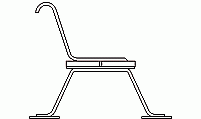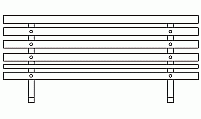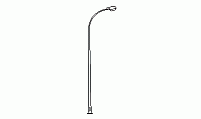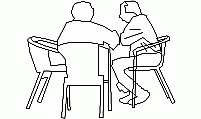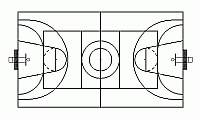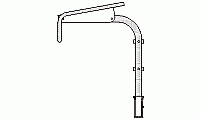52 Playful Kids Silhouette DWG Blocks
Download this set of free DWG CAD blocks featuring children playing in various poses—running, jumping, and engaging in fun activities.

size: 1340 kb
category: people
Related categories:
Description: This CAD block collection features 52 children in various playful poses—running, jumping, and engaging in group activities. Each silhouette showcases dynamic movements such as leaping, crouching, or throwing. At the top, a trampoline with a protective net is depicted, adding a playful and energetic element to the scene.
file extension: .dwg CAD - AutoCAD software
Playground and Recreational Space Ideas
General Recommendations for Playground Design
Designing engaging and safe playgrounds requires a holistic approach. Consider the age range of the children who will be using the space. Separate areas for younger and older children are recommended to prevent injuries and ensure age-appropriate play. As the image highlights, kids engage in diverse activities, needing different zones. Accessibility is paramount; designs should comply with ADA (Americans with Disabilities Act) guidelines to ensure children of all abilities can enjoy the playground. Site selection is also key: consider sun exposure, drainage, and proximity to other facilities.
Materials to Use
The choice of materials significantly impacts the safety and longevity of the playground. Opt for durable, weather-resistant materials that can withstand heavy use. Recycled rubber, engineered wood fiber (EWF), and poured-in-place rubber are excellent choices for safety surfacing. For play structures, consider materials like treated lumber, powder-coated metal, and recycled plastic, which offer both durability and aesthetic appeal. Always ensure materials meet safety standards and are non-toxic.
Common Games and Equipment
A well-designed playground offers a variety of play opportunities. Swings, slides, climbing structures, and sandboxes are classic favorites. The image showcases several silhouettes depicting running, jumping, and playful interactions, emphasizing the need for diverse equipment. When incorporating trampolines, ensure they meet safety standards, including adequate padding and enclosure netting. Consider adding sensory play elements, such as musical instruments or textured surfaces, to cater to different learning styles.
Safety Materials and Protections
Safety is the top priority in playground design. Impact-absorbing surfaces are essential under and around all play equipment. The type of surfacing required depends on the fall height of the equipment. As shown in the image, children can engage in dynamic activities with potential risks of falling. Protective barriers, such as guardrails and safety netting, are crucial to prevent falls from elevated structures. Regular inspections and maintenance are also essential to ensure the ongoing safety of the playground.
Spaces, Surfaces, Heights, and Recommended Distances
Proper spacing and clearances are critical for playground safety. Ensure adequate use zones around each piece of equipment to prevent collisions. Minimum fall heights should be adhered to strictly. As a general guideline, a minimum of six feet between play structures is recommended. Also, be sure to consider adequate spacing for wheelchairs and other mobility devices. The image's layout emphasizes the need for appropriate spacing for various activities.
Optimal and Necessary Lighting
Adequate lighting is vital for safety and security, especially for playgrounds that are open after dark. Ensure the playground is well-lit with energy-efficient LED fixtures. Consider the placement of lighting to minimize glare and shadows. Lighting should illuminate pathways, play areas, and entrance points. Motion sensors can be used to conserve energy and deter vandalism.
Regulations in the US, UK, Japan, Australia, and Europe
Playground regulations vary by region. In the US, the Consumer Product Safety Commission (CPSC) provides guidelines for playground safety; compliance is essential. The UK follows standards set by the British Standards Institution (BSI). Japan adheres to the Japanese Industrial Standards (JIS) for playground equipment, ensuring safety. Australia follows Australian Standards (AS) 4685. In Europe, EN 1176 and EN 1177 are the relevant standards for playground equipment and surfacing, respectively. Always consult local and national regulations to ensure compliance with safety and accessibility requirements. Staying up-to-date with the latest regulatory changes is critical for making informed design decisions, impacting everything from surface choices to equipment layout.






